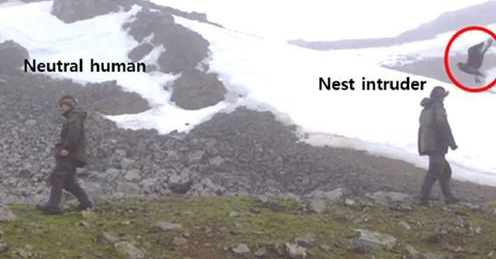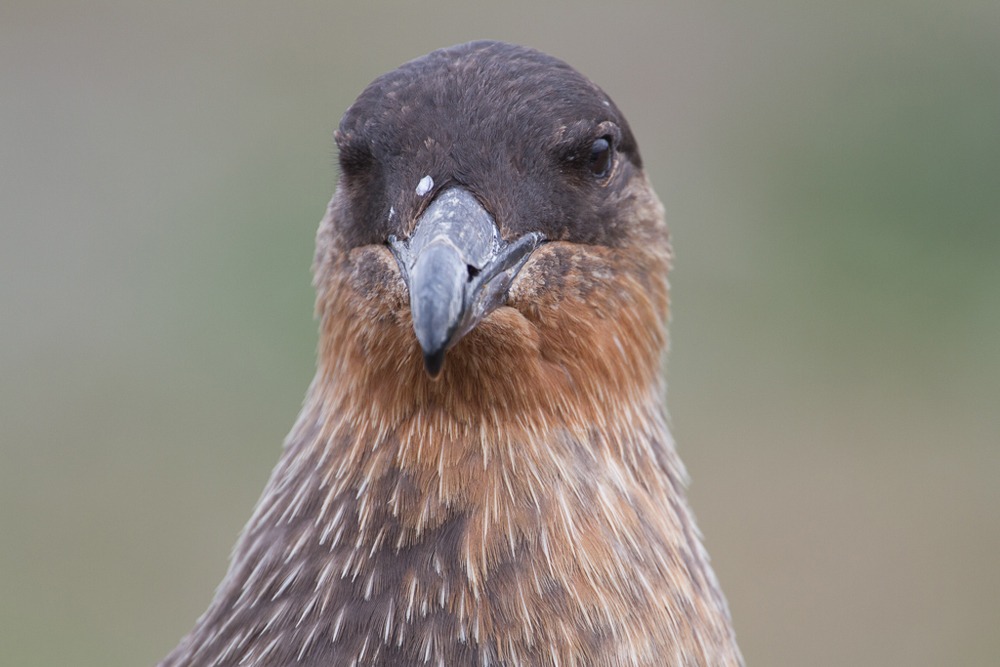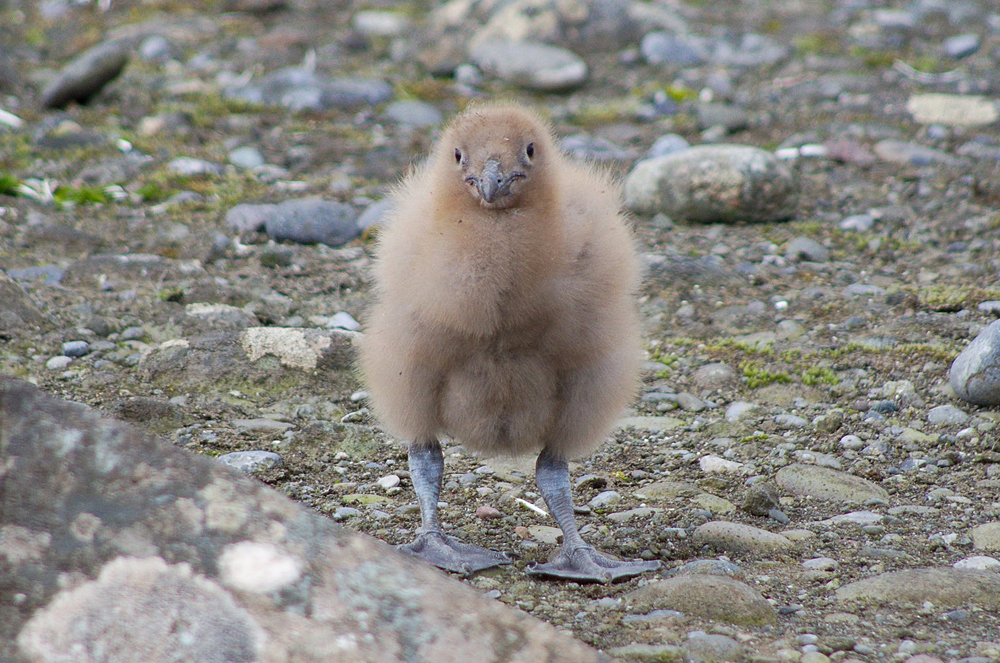Antarctica’s Milk-Stealing, Grudge-Holding Seabirds
New study shows that brown skuas, already known to steal seal milk, also recognize and attack nest-invading humans.
By Vicki Croke

Skuas are big seabirds who aren’t afraid to “hit” scientists who invade their nests. Photo: Pablo Caceres Contreras/Flickr.
“I had to defend myself against the skuas’ attack,” says Yeong-Deok Han, a PhD student at South Korea’s Inha University. “When I was with other researchers, the birds flew over me and tried to hit me. Even when I changed my field clothes, they followed me. The birds seemed to know me no matter what I wear.”
The student was part of a team of scientists from South Korea studying a particular kind of seabird—brown skuas, who look like beefed-up gulls—living in Antarctica. The scientists believed that the birds took note of which individual scientists invaded nests to measure eggs and nestlings.
It’s known that crows, magpies, and mockingbirds—clever birds who live among people—can recognize individual human faces. But the researchers were surprised that brown skuas, living in such a remote area as the South Pole, would have the capacity to distinguish individual people—even when those people wore different clothes.
To test their impressions, the scientists conducted a series of experiments. According to a news release from Laboratory of Behavioral Ecology and Evolution at Seoul National University:
The researchers checked the nests once a week to monitor the breeding status, and the skuas attacked at closer distances with repeated visits of the researchers.

To test if the birds specifically distinguish the researchers who visited the nests from those who did not, a pair of humans consisting of nest intruder (who accessed the nests) and neutral human (who never accessed the nests before) approached to the nests and walked towards the opposite directions. All seven skua pairs followed and tried to attack the nest intruder but never followed the neutral human.
Given a choice of two humans, skuas can identify the one who has previously invaded their nest. Video: 이원영/YouTube.
The cleverness of skuas has already been revealed in previous observations. For instance, they’ve been seen stealing food from other birds, and more amazingly, sneaking breast milk from nursing elephant seals. (Milk theft, or really cream-on-top theft, was known among blue tit birds in England—who, starting in the 1920s, would open tinfoil caps of bottles delivered to family doorsteps by milkmen.)
Holding grudges and stealing milk? Those are the kinds of activities we humans recognize as signs of intelligence.

Scientists are now crediting the brown skua with “very high levels of cognitive abilities.” Photo: Pablo Fernicola/Flickr.
“It is amazing that brown skuas, which evolved and lived in human-free habitats, recognized individual humans just after 3 or 4 visits. It seems that they have very high levels of cognitive abilities,” says Dr. Won Young Lee, a Senior Researcher from Korea Polar Research Institute who led the research. He also noted, “Since this area has been inhabited by humans only after the Antarctic research stations were installed, we think that the skuas could acquire the discriminatory abilities during a short-term period of living near humans.”
The team published their findings this month in the journal Animal Cognition.

